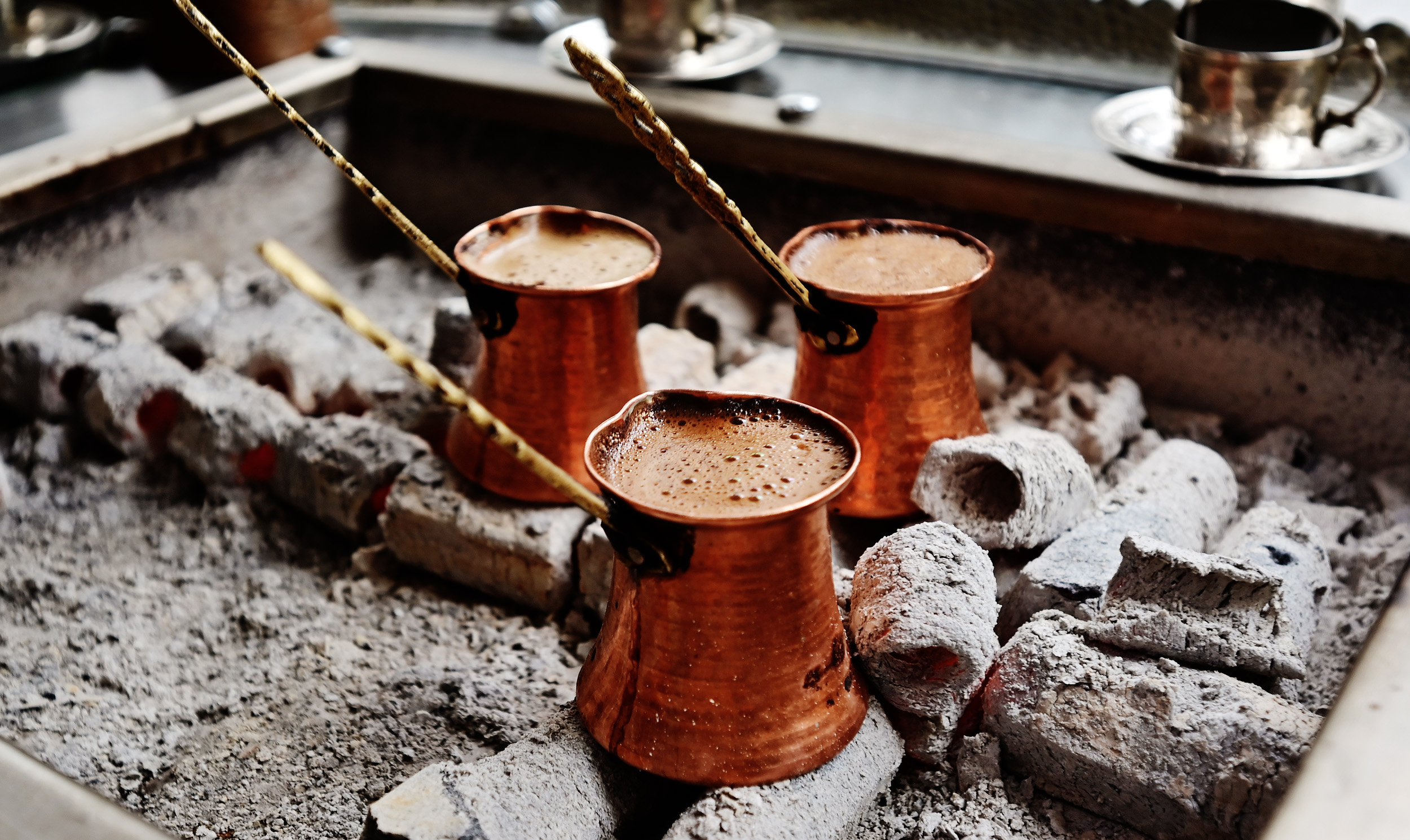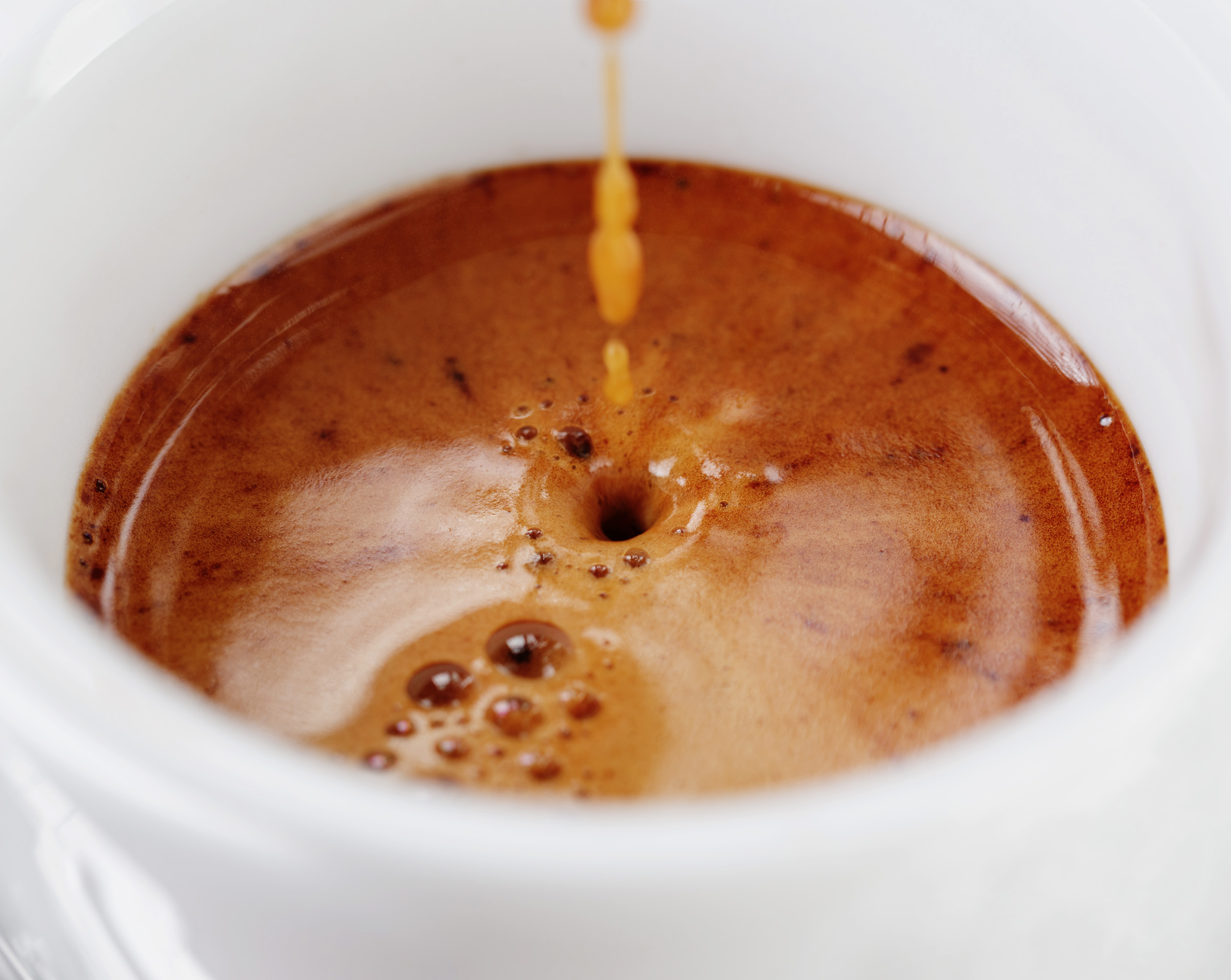In case you didn’t know, for most of our blog posts we ask readers in our Facebook group to pick questions for us to answer. This week, you voted for this question: ‘What happens if you take coffee grinds and put them in the oven at 70° C to disperse roasting gases, and then make an espresso?’
The answer is: surprisingly little. Heating the grinds clearly accelerates the aging process, resulting in faster shots, less crema, and stale-tasting espresso. But, Professor Abbott had estimated that five minutes in a posh dehydration oven would be more than enough to drive off CO2 in an ordinary porous medium. Read on, to find out why coffee is clearly no ordinary porous medium.
A huge thank you to Five Elephant coffee roastery in Berlin, for allowing us to use their training lab and equipment for these experiments.
The Rationale
As with many of our experiments, the impetus for this experiment came from a discussion with Professor Abbott; in this case about cezve. This fantastic brewing method is also known as Turkish coffee, or Ibrik and we have been researching it for an upcoming chapter in our latest online barista course called Immersion. During some experiments we have been conducting with brewing cezve, we made some surprising observations: Cezve coffee still rises up (blooms) when you brew with coffee that has been ultra-finely ground, 24 hours earlier and left out in the open air.

Foam rising in cezves. Are the bubbles formed by trapped roasting gases, or is it gases dissolved in the brewing water bubbling out as it comes to a boil?
Since then we have been trying to establish where the foam comes from? Maybe air can perform the same role that CO2 does in making cezves rise up? Perhaps it is the dissolved gases in the brew water that contribute to the rising effect, and the grinds are acting as nucleation points for those gases to form bubbles? Or it could be that there are enough deposits of CO2 trapped in the cell walls of coffee grinds, are even after 24 hours of being ground on an ultrafine setting to produce silky cezve crema, even when you use stale coffee Since espresso is easier to control and study, we transferred the idea to looking at crema in espresso to find some more clues.
We know that roasted coffee beans have varying amounts of CO2 trapped inside them (S Smrke et al. 2017), which is released slowly over time, and much faster after grinding (X Wang & L-T Lim 2014). What we wanted to establish is whether, as the CO2 dissipates, air that moves in to replace it in the grinds might also contribute to the crema. If this was the case, it could challenge some of the established understanding of the role of CO2 in espresso.
The Experiment
To test this, we made espressos using our standard experimental technique, but under three different conditions. Firstly, after dosing and tamping, we put the entire portafilter into an oven at 70° C for five minutes, to drive gases out of the coffee. We used a specialised dehydration oven to allow fine control over the temperature. After five minutes, we immediately put the portafilter into the machine and made the espresso.

Does the crema in an espresso give any insight into how the foam forms in a cezve?
For the second condition, we heated the coffee as before, but then let it sit at room temperature for 30 minutes before pulling the shot, to allow it to cool and give time for air to infiltrate the spaces vacated by the roasting gases.
The third condition was a control, with shots made as normal.
We made three shots in each condition, in a random order, and took the following measurements: the height of the crema 10 seconds after brewing, the shot time, and the extraction, and we also tasted samples of each shot.
Heating the coffee to drive off gases had a small but measurable effect. It made the shot run more quickly, and reduced the amount of crema produced, as might be expected. It also slightly increased the average extraction, which could be down to the higher effective brewing temperature from the hot grounds.
Letting the coffee cool again didn’t change anything: The shots still ran quickly and produced less crema, indicating that air coming back into the coffee probably isn’t contributing much to the crema or significantly slowing down the shot. Air is much less soluble in water than CO2, which perhaps explains why it doesn’t play as important a role in the espresso. The extraction, meanwhile, was much the same as in the control group.
| Shot time | Crema (mm) | Extraction (%) | |
| Control | 24.0 | 5.7 | 21.7 |
| Heated | 20.7 | 3.7 | 22.0 |
| Heated then cooled | 20.7 | 3.3 | 21.6 |
There was a noticeable change in flavour — both the heated, and the heated then cooled samples, resulted in noticeably less aromatic espresso with a flat flavour, similar to that made from stale coffee. This fits in with our results above, suggesting that heating coffee simply accelerates the aging process, and that it is indeed the loss of gases, rather than the evaporation or breakdown of other components such as lipids, that affects the way espressos run as coffee ages. Once the roasting gases leave the coffee, other gases moving into that space just don’t have the same effect.
On Negative Results
It’s common, in scientific research as well as everyday life, to think of an experiment as ‘failed’ if it didn’t get the results you were looking for. Say you come up with a new way to improve your coffee, you try the method out and find out that it actually makes the coffee taste worse: the experiment failed.
However, this is missing the point of an experiment. A well designed experiment isn’t set up to confirm what you already think, but to help you find out the truth. Just because the truth isn’t the answer you were looking for doesn’t mean that the experiment didn’t work! In our example, the experiment worked perfectly; unfortunately, all it proved is that the idea behind it wasn’t right.
Researchers call this kind of findings ‘negative results’, and they’re a really important part of the scientific literature. The problem is, they’re generally seen as having less impact and being less interesting to read, so they’re often not published. When this happens, there’s nothing to stop other researchers with the same idea trying and ‘failing’, wasting their time and resources. Even worse, if the evidence for something is mixed, then the fact that negative results are less prominent means we’re more likely to conclude that the positive results are true — a phenomenon known as ‘publication bias’. In medical research, for example, this can have serious consequences — with drugs being approved that don’t work that well, simply because the experiments that showed they didn’t work weren’t considered ‘interesting’ enough.
The stakes are of course rather lower in this case, but the point stands: it’s important to learn what doesn’t work, as well as what does. So while we may not have found the surprising result that we were hoping for, it still contributes to our knowledge. Furthermore, the striking effect on the flavour really highlights how much of the aromas in coffee may be lost by leaving grinds sitting in the chamber of an overheated grinder. The inside of an espresso grinder can reach temperatures as high as 80–100° C during heavy use (M Petracco 2005), and this remains an unsolved problem in grinding technology.




Great article, loved it. One question , based from the grinder class from espresso lesson about the when the grounds are heated, doesn’t the elasticity/plasticity of the grounds also increase and make it more prone to releasing gases ?
Great article. Some thoughts.
1. What was the roast profile of the beans use in all trails? Was this lighter than the roast normally used on Turkish.
2. Assuming the grind was espresso, would the grinder settings be the same for Turkish, I would think that it would be more course than what we use for espresso.
3. If the above are correct, would co2 gases be easier stores in larger particle mass than in espresso particles?
I hope that makes sense, maybe there is more surface area within larger particles for co2 to sit.
Would be great to know the above.
Hi Dayne, thanks for commenting. To answer your questions one at a time
1. This was an espresso roast: we would actually prefer lighter roasts than this for cezve ourselves, although darker roast may be more traditional.
2. Turkish grind should actually be finer than for espresso, to the point that there are very few if any intact cells
3. That’s correct, larger particles have less surface area for degassing and research shows for example that espresso grinds degas more quickly than filter grinds. (see this post for more on that)